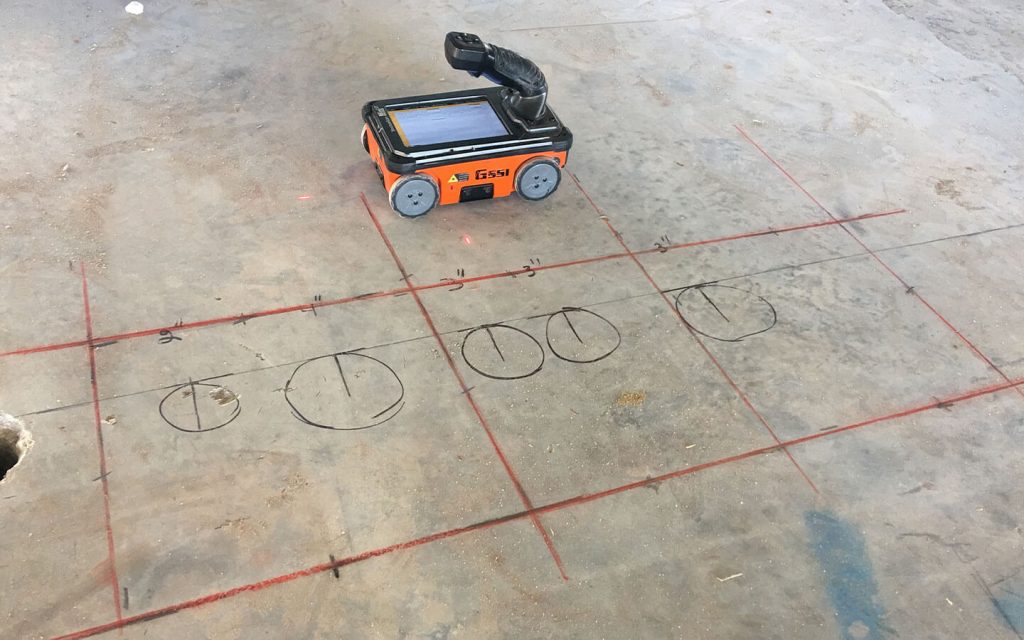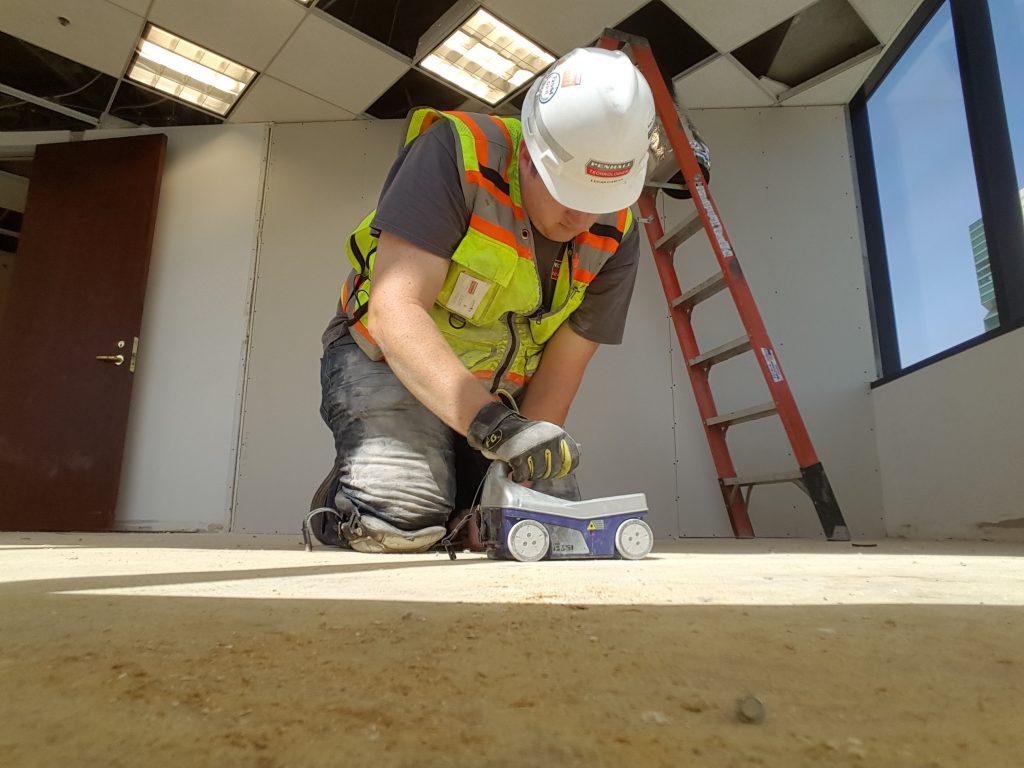Discovering the Midst: A Comprehensive Overview to Concrete Scanning and Its Diverse Applications
In the world of building and infrastructure growth, the meticulous procedure of concrete scanning holds an essential function in guaranteeing the structural integrity and safety of jobs. As modern technology proceeds to develop, the applications of concrete scanning have increased much beyond simple surface-level assessments.
Significance of Concrete Scanning
Comprehending the importance of concrete scanning is important in ensuring the security and stability of frameworks throughout building and construction and improvement jobs. Concrete scanning uses advanced modern technologies such as ground-penetrating radar (GPR) and electro-magnetic induction to detect ingrained things, spaces, or various other abnormalities within concrete structures - RainierGPR Concrete Scanning. By conducting detailed scans prior to exploration, reducing, or coring into concrete, building and construction groups can avoid unintentional damage to crucial architectural components like rebar, avenues, or post-tension cable televisions. This proactive strategy not only prevents pricey repairs and project delays however additionally boosts overall building and construction safety and security by mitigating the threat of structural failures or collapses because of endangered stability.
In addition, concrete scanning plays an essential role in ensuring conformity with building regulations and regulations that mandate the protection of existing structural elements throughout building tasks. By properly drawing up the interior make-up of concrete, scanning modern technologies allow construction professionals to make educated choices that support the architectural stability and resilience of structures and infrastructure jobs. In essence, the relevance of concrete scanning hinges on its capacity to guard both the structural integrity and the personnel involved in building and construction ventures.
Technologies Used in Concrete Scanning
Concrete scanning relies upon innovative innovations such as ground-penetrating radar (GPR) and electro-magnetic induction to properly discover ingrained items and anomalies within concrete frameworks. Ground-penetrating radar runs by discharging high-frequency electro-magnetic waves into the concrete. When these waves encounter various materials or gaps within the concrete, they recuperate to the surface area, enabling the GPR system to create a comprehensive subsurface image. This modern technology is especially reliable in situating rebar, post-tension cords, channels, and other items installed in concrete.
Electromagnetic induction, on the various other hand, functions by creating electromagnetic fields around a concrete structure through a transmitter coil. When steel items are existing within the concrete, they interfere with these magnetic fields, causing eddy currents to stream with the metal. By measuring the adjustments in the electro-magnetic areas with a receiver coil, the system can identify the place of metallic items in the concrete.
These innovative modern technologies play an important function in non-destructive testing, making sure the security and honesty of concrete frameworks in various markets.
Applications in Construction Market
Within the building and construction market, concrete scanning innovation discovers diverse applications that enhance job efficiency and safety and security. One crucial application is the discovery of rebar, post-tension cords, and other ingrained objects prior to drilling or cutting into concrete frameworks. By precisely drawing up these aspects, building and construction groups can stay clear of costly damages, ensure structural integrity, and prevent prospective safety hazards. In addition, concrete scanning is made use of for locating gaps, such as air pockets or areas of damage within concrete, which can endanger the general strength of a structure. By identifying these gaps early on, construction experts can take required procedures to address them and preserve the resilience of the that site building. Concrete scanning plays a vital function in quality control by verifying the thickness of concrete covers over support, guaranteeing compliance with style specifications and standards. On the whole, the applications of concrete scanning in the construction market contribute substantially to improving job operations, decreasing dangers, and delivering high-quality outcomes.

Safety And Security Benefits of Concrete Scanning
In the world of construction safety and security, the application of concrete scanning innovation presents an extremely important benefit in preemptively determining potential dangers and fortifying architectural honesty. By utilizing innovative scanning techniques such as ground-penetrating radar (GPR) and electro-magnetic induction, building groups can accurately find rebar, post-tension cables, avenues, and other covert items within concrete frameworks. This proactive technique considerably lowers the risk of unintended strikes during exploration, reducing, or coring tasks, thus avoiding expensive damages, injuries, and task hold-ups.
Moreover, concrete scanning enhances employee security by supplying real-time info regarding the structural condition of concrete aspects. By resolving possible safety problems promptly, concrete scanning adds to creating a safe and secure functioning setting and mitigating the chance of structural failings or mishaps on building websites.
Future Patterns in Concrete Scanning
Arising developments in scanning technology are poised to revolutionize the area of concrete evaluation and analysis. One major trend that is obtaining traction is the assimilation of expert system (AI) and artificial intelligence algorithms into concrete scanning gadgets. By using the power of AI, these systems can evaluate vast quantities of data collected during scanning processes to give more comprehensive and exact understandings into the problem of concrete structures. This can assist in discovering hidden flaws, predicting prospective architectural failures, and even advising maintenance strategies.
An additional significant pattern is the advancement of more mobile and easy to use scanning devices. Miniaturization of scanning tools permits for easier access to confined spaces and remote locations, making assessments much more efficient and comprehensive. In addition, developments in wireless communication innovations allow real-time information transfer and analysis, assisting in quicker decision-making processes.
Furthermore, there is a growing check here emphasis on sustainability in concrete scanning modern technologies - RainierGPR Concrete Scanning. Manufacturers are progressively including eco-friendly products and energy-efficient features into their devices to minimize environmental influence. These future patterns are established to boost the efficiency, precision, and sustainability of concrete scanning techniques, shaping the sector's future landscape
Final Thought
In final thought, concrete scanning plays a critical function in the construction industry by making sure the safety and security and effectiveness of numerous projects. As index innovation breakthroughs, the future of concrete scanning holds promising advancements for boosting construction processes.

Comments on “RainierGPR Concrete Scanning: Key Insights for Effective Tasks”